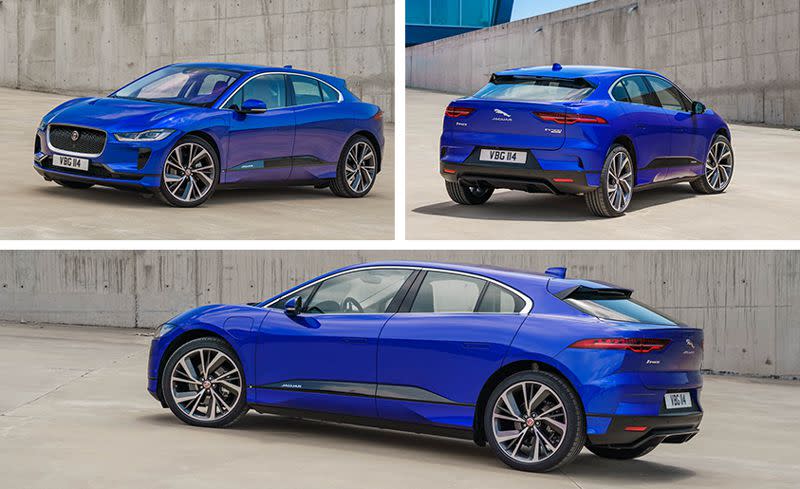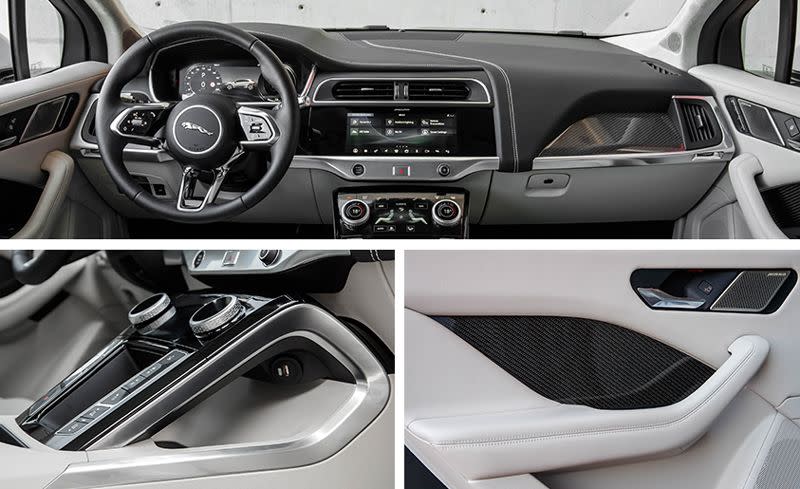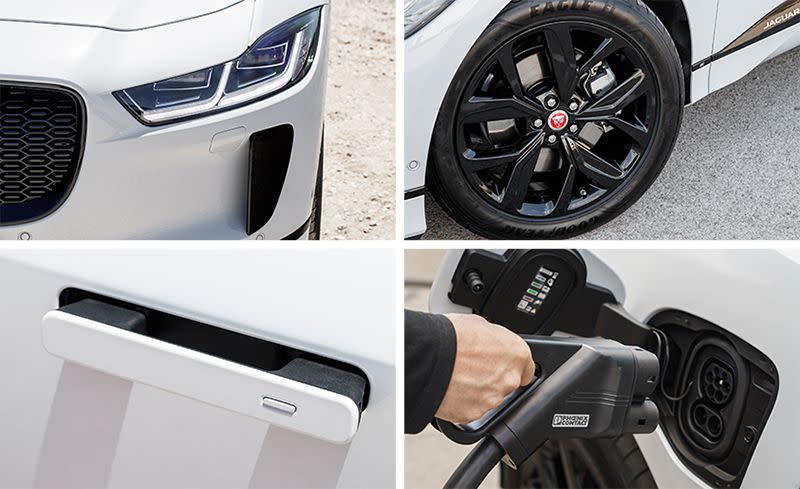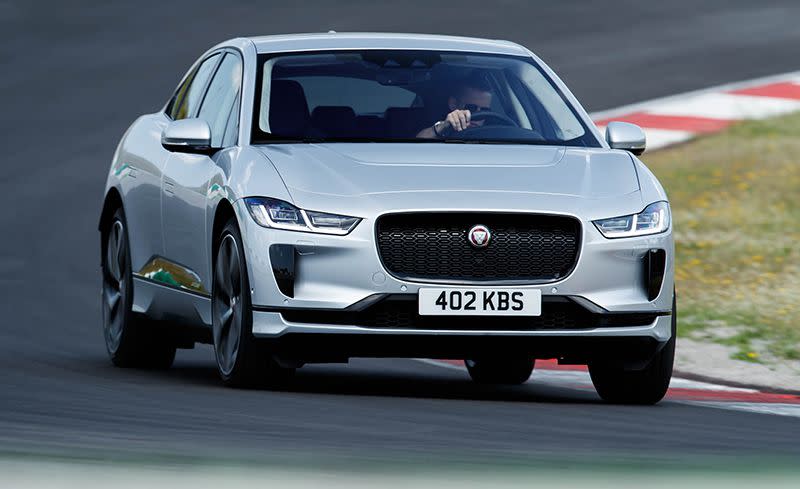We Drive the I-Pace, Jaguar’s First EV!
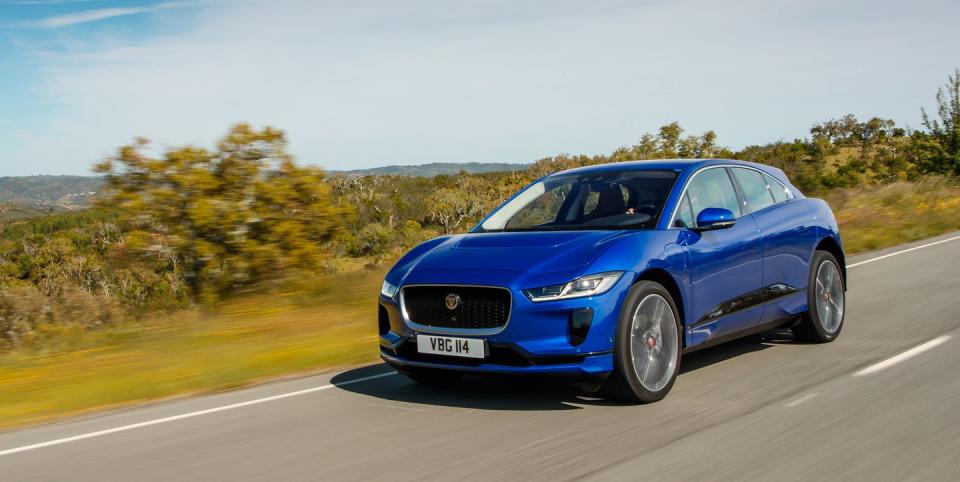
If you’re still anticipating that the arrival of any new electric vehicle will undo a 15-year-old car company, it’s time to let go of that fantasy. The Tesla killer is a myth. A phantom. A four-wheeled Chupacabra. That’s true even as the 2019 Jaguar I-Pace-a $70,495 five-seat crossover with an estimated 240 miles of range-establishes itself as the most complete electric vehicle yet. A Tesla competitor? Absolutely. Will it suck the life out of Tesla sales? Not a chance.
No single electric vehicle, whether it’s built by a century-old automaker or a West Coast startup, will inspire tens of thousands to cancel their reservations, abandon their Tesla-centric Twitter handles, and turn their backs on Elon Musk. The Chevrolet Bolt EV already has proved that Tesla acolytes won’t be baited by a more affordable and better-built electric vehicle.
The I-Pace has both of those attributes as well. It starts at $10,205 less than a 238-mile-range Tesla Model X 75D. The I-Pace also offers style, luxury, and an allure that has heretofore been a Tesla exclusive among EVs. The segment is about to get a lot more crowded, though. The I-Pace leads a slow-forming wave of electric-vehicle introductions from luxury marques including Audi, Mercedes-Benz, and Porsche. It makes a fitting Jaguar, too, considering the packaging advantages, the effortless torque, and the near-silence of battery-powered propulsion. Sir William Lyons certainly had something else in mind when he established Jaguar’s guiding principles of grace, space, and pace decades ago, but this electric Jag is a pure manifestation of them nevertheless.
Speed and Serenity
At launch, the I-Pace will be available solely in EV400 spec. In this configuration, two identical electric motors, one to power each axle, gives the I-Pace all-wheel drive and the easy speed that comes from 394 horsepower and 512 lb-ft of torque. Squeezing the accelerator whisks the I-Pace forward with alacrity and we expect the Jag to reach 60 mph in 4.5 seconds. Despite this, you never quite shake the sensation of the I-Pace’s 4800 pounds slurring its straight-line responses. Planting your right foot lacks the stomach-turning shock of the Tesla Model S’s Ludicrous mode.
During acceleration, the I-Pace’s speakers whir and warble with artificial noise, increasing in pitch as speed builds and sounding a bit like George Jetson’s bubble-canopy saucer. The best part of this sci-fi theater is that it can be turned off, at which point the I-Pace becomes utterly serene. At light loads below 30 mph, the I-Pace drives only its rear-axle motor to the benefit of both efficiency and NVH. At higher speeds, wind noise is hushed by acoustically laminated front side glass and full-frame doors. The cabin, free from squeaks and rattles, completes the experience with meticulous finishes.
Lift off the right pedal and Jag claims the I-Pace decelerates at 0.20 g in the higher of two regenerative braking settings, adequate to negotiate many traffic situations without sliding your foot to the pedal to the left. The initial brush of the brake pedal increases the regen deceleration to a maximum of 0.4 g before the friction brakes engage. Pedal modulation is predictable and transitions from regenerative to friction braking and back are seamless, although we would prefer more firmness and shorter pedal travel.
Standard air springs can raise the body 2.0 inches in an off-road mode and lower it 1.6 inches for ingress and egress. Above 65 mph, the I-Pace also hunkers down by 0.4 inch to improve aerodynamics. With the ground clearance of a car and a 1329-pound 90.0-kWh battery anchoring its heft, the I-Pace plants itself in corners with nice body control. Low-rolling-resistance 18-inch tires come standard, but we were offered a chance to drive the Jag only on summer tires with both the available 20- and 22-inch wheels, setups that push the I-Pace’s limits beyond what any vehicle this large and heavy needs. Driving an I-Pace with the 22-inch wheels and the available adaptive dampers, we noticed a gentle and slight wallow in the ride over smooth dips and crests. That behavior became less significant on the 20-inch rollers.
We also motored up a rough and steep two-track and around a race circuit in southern Portugal, not because owners will, but because the I-Pace can. The Jaguar acquitted itself well in both environments. We saw no noticeable power degradation over our three fast laps of the 2.9-mile circuit. The last time we put a Model S on a track, the Tesla couldn’t complete a full lap without reducing power output.
Reformatting the Automobile
Guided by the powertrain packaging, Jaguar designers pulled the greenhouse forward and pushed the wheels to the corners. These proportions make the Jag look like a small hatchback in many pictures, but the scale reads larger in person, particularly when you realize how tall the hood is. Wearing the optional 22-inch wheels, the tires stand 30 inches tall. The I-Pace’s wheelbase is more than two inches longer than that of a BMW X5 while overall length is more than an inch shorter than that of an X3. The package also allows a shoebox-size frunk. It’ll fit a laptop but not a laptop bag.
The I-Pace’s big grille serves the Jaguar brand identity more than it does the powertrain, although there are small voids to flow air to the car’s heat exchangers. The grille’s rounded top edge directs air beneath the bridge of the hood, out the scoop, over the windshield and roof, and under the rear wing to calm the airflow coming off the tail of the car. Jag claims this stream also works to effectively clear moisture off the raked rear glass, and thus there is no rear wiper. The boxy rear end-BMW 318ti, anyone?-is an aerodynamic appeasement that helps the I-Pace to a carlike drag coefficient as low as 0.29.
The battery pack in the floor creates a tall sill and a high step-in to the wide and roomy cabin. The rear offers generous space for adults, but the low, short, and flat cushions were clearly designed with children in mind. The conventional center console concentrates most controls in two screens: a main 10.0-inch unit on top and a lower 5.5-inch screen primarily used for climate functions. These follow in recent Jaguar tradition by being painfully slow at everything they do, from the boot-up sequence to switching tasks to responding to taps. The infotainment system, along with the telematics module and battery management software, can receive over-the-air updates from the home office, but such patches seem unlikely to deliver the much-needed responsiveness.
Battery Matters
Jaguar, like the rest of the established auto industry, has no answer to Tesla’s Supercharger network. All I-Paces come equipped with SAE CCS ports for DC fast-charging, but owners will have to negotiate an incomplete and fragmented network of third-party providers and, even then, will be accessing slower charging. While the I-Pace can accommodate 100-kW DC charging, outside of Tesla’s 125-kW equipment the existing infrastructure almost all operates at 50 kW. Those units should charge an I-Pace’s battery from zero to 80 percent in 85 minutes, stretching the definition of “fast.” At home, a full charge of the lithium-ion pack will take almost 13 hours with 240-volt, 32-amp service.
Jaguar takes the burgeoning standard of an eight-year/100,000-mile battery warranty a step further by defining that the battery will maintain a 70 percent or better state of health until that point. Chevrolet warranties the Bolt EV’s battery to 60 percent health, and Tesla doesn’t define a minimum acceptable performance. While the early-build I-Paces used for the media launch displayed excellent build quality, they weren’t without flaw. One car reported a high-voltage short and refused to power on when a driver thumbed the start button. Less alarming, in another car the window became stuck in a half-open position. In theory, the relative simplicity of a battery-electric car should help Jaguar boost its subpar reliability ratings, but only time will tell how the I-Pace holds up.
On initial impression, the Jaguar I-Pace sets the new standard for luxury electric vehicles with its competitive pricing, impressive refinement, and sharp driving dynamics. It’s a welcome infusion of style and desirability into the EV market, which has often fallen short in those areas. Pulling together the elements that stir hearts and inspire driving with the technology that is advancing the automobile makes the I-Pace the most complete EV on the market.
You Might Also Like

 Yahoo Finance
Yahoo Finance 